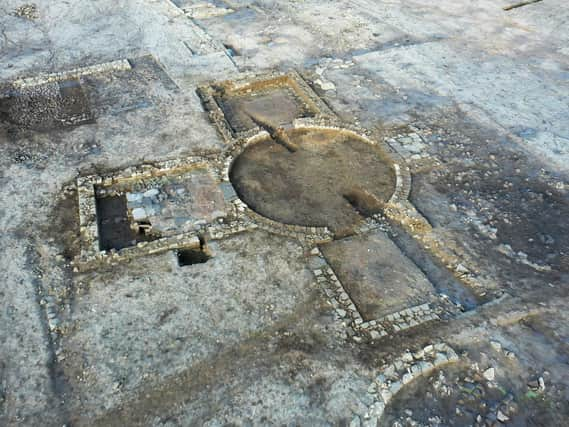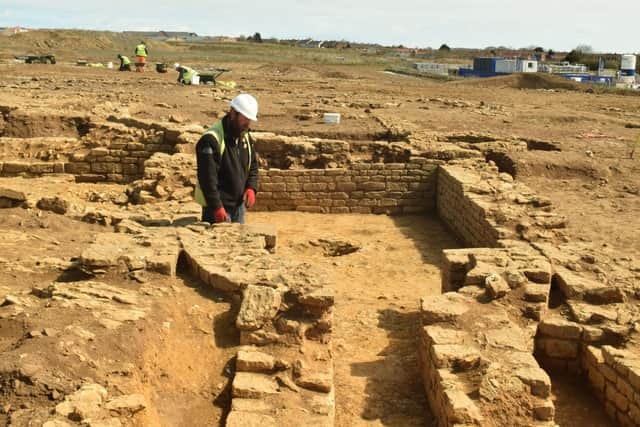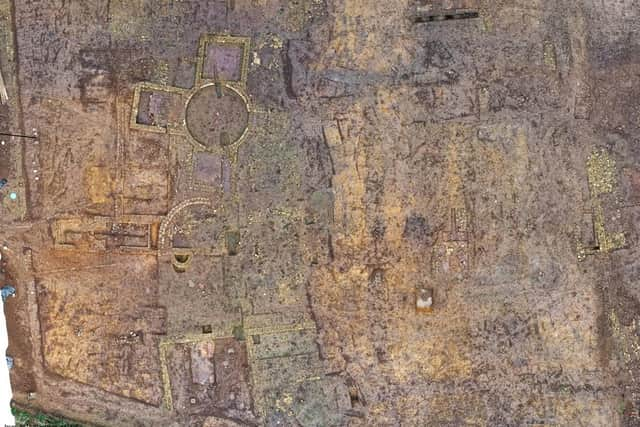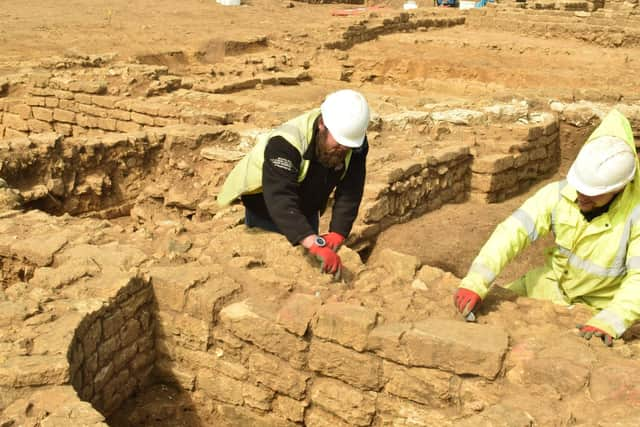Scarborough Roman villa: History of the Romans on the Yorkshire Coast


A Roman signal station was discovered in the grounds of Scarborough Castle during the partial excavation of the site between 1920 and 1924, which are now laid out for the public to view.
The station was part of a string of lookouts along the Yorkshire Coast in the fourth century AD to warn of invaders. Other stations are recorded at Huntcliff, Goldsborough, Ravenscar and Filey, whilst, at Whitby, Roman material found suggest that there was a sixth outpost.
Advertisement
Hide AdAdvertisement
Hide AdThe signal station in Scarborough comprised a square, ditched enclosure with rounded corners and small angle bastions. It had a diameter of 33m and enclosed a small courtyard containing a double-stepped plinth which formed the base for a central tower between 27m and 30m high.


The signal tower was built of wood but had stone foundations and was guarded by a gatehouse that controlled the entrance into the courtyard.
Roman coins found in the castle grounds show the station was built in c.AD 370 and occupied almost continuously until the early fifth century when it was overrun and destroyed.
Roman use of the coast is subject to speculation, and little is known. Roman roads out to the coast in North Yorkshire have not been well explored.
Advertisement
Hide AdAdvertisement
Hide AdA well-known Roman site in the North York Moors is the Cawthorn military complex at Cropton, which is near Pickering, although there are known to be other sites, such as a fort at Lease Rigg, and two villas.


Archaeological investigation has led to a re-evaluation of Cawthorn. Long considered a group of military practise camps, it is now clear that the well-preserved earthwork remains include two forts, one with an annexe, together with a temporary camp.
The city of York is of course well-known for its connection to the Romans; the city began in 71 AD when 5,000 men from the ninth legion marched from Lincoln to set up camp and conquer York. Not only did the Romans create York, they lived and ruled in it for the next three centuries, turning it into a city of global importance.
Only two per cent of Roman remains have been rediscovered in York, and so much of the Roman city still remains a secret.
Advertisement
Hide AdAdvertisement
Hide AdOn Wednesday it was revealed that a large complex of Roman buildings had been discovered in Eastfield; including a circular central room with a number of other rooms and a bath-house leading from it. Experts believe they are the foundations of a 'high-status' Roman villa, some sort of religious community or perhaps a combination of both.


This type of villa layout has never previously been found in Britain and it could even be the first example to be uncovered in the whole of the old Roman Empire.
Experts are currently debating several different theories relating to the Eastfield villa's origins and uses, and further research will be undertaken in the coming months.
"The building is a very unusual shape - circular in plan with rooms coming off the centre. It's not something we've seen before," said inspector of ancient monuments Keith Emerick. "We've spoken to Roman experts such as Martin Millett from the University of Cambridge who have worked on digs all over Europe, and they haven't seen anything like it.
Advertisement
Hide AdAdvertisement
Hide Ad"It had central heating, and there are round and aisled buildings around it. Underneath we believe was a traditional villa that was later built on and possibly even a timber villa which was a precursor."
Items including pottery have also been found, and the lack of scattered debris suggests that the building was deliberately dismantled at the end of its operational life, possibly coinciding with the Romans' departure from Britain.
"We are struggling to find parallels. It seems to have functioned a bit like a stately home, as the stonework is of the highest quality and its use perhaps changed over time. We said it's a bit like a Roman version of Swinton Castle, near Masham - a spa and a gentlemen's club! But our theories may change once we learn more."